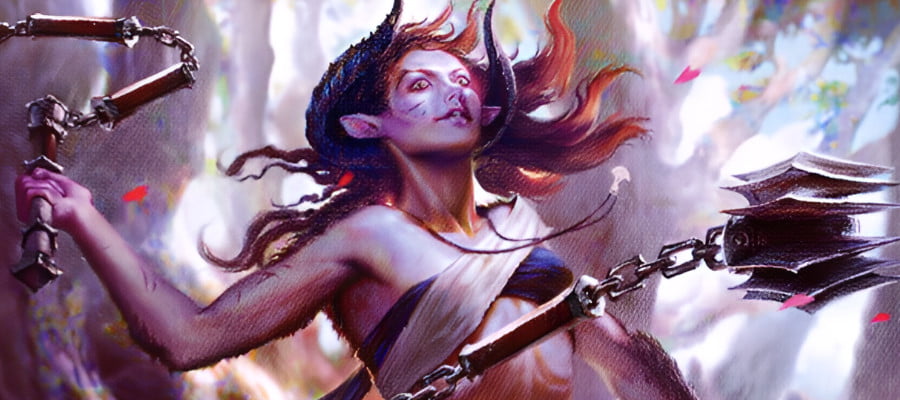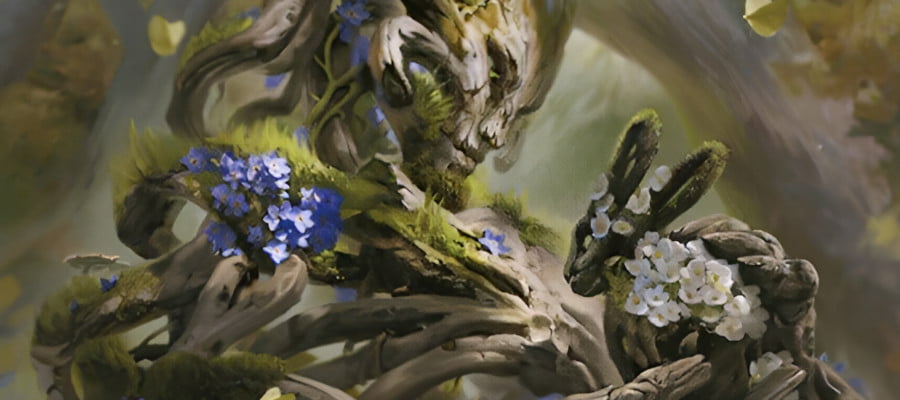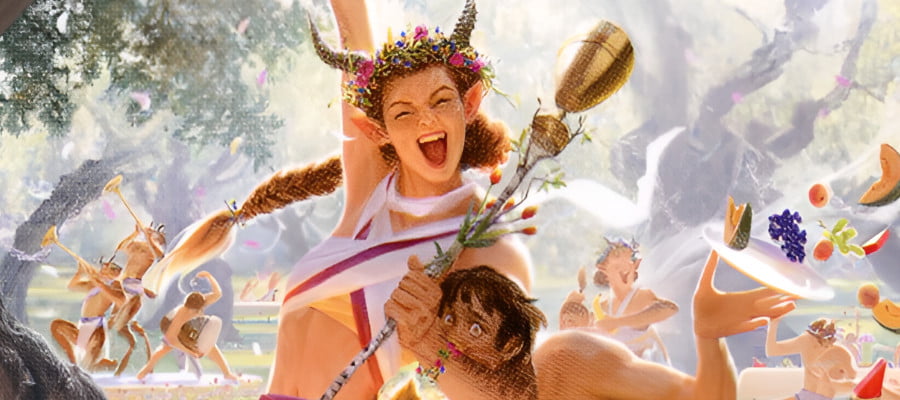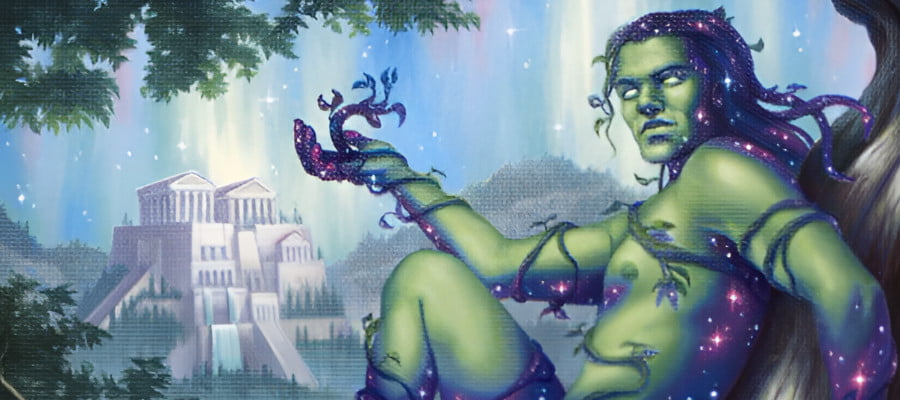Ehhh this article is due up in a few days. And I’m behind because the blog went down. And it’s marking season. And it’s Pride month.
Sure, why not.

I want to make sure that any time I write about 4e D&D, it’s about 4e D&D and that means it’s about the specific edition and not stuff that can be generically applied to and drawn from any other edition of the game. I could just write about tabletop RPGs in general or even about D&D in general and claim it was ‘about 4e’ but that doesn’t do anything as to my motivations for writing about 4e. See, I write about 4e for three basic reasons:
- To be an experienced voice willing to talk about 4th edition D&D as someone who engages with it rather than the people who dismiss it without ever engaging with it
- To highlight the way that 4e represents a historical contrast to the editions that came before it, and how the problems of that edition are addressed by 4e
- I like talking about 4e stuff because I find it fun
And there is still fertile fields for this conversation! What’s surprisingly thin on the ground in 4e is Pride Stuff, and that is because, for the most part, sadly, 4e takes a position of absolute neutrality on issues of gender and sexuality. The 4e way of handling sexuality and gender is to broadly speaking almost never talk about it. There are a few heritages that don’t seem to have genders, like the Shardmind and Wildren, and there are some queer NPCs in some work, but that’s not new territory. It’s more that 4e is the first place where the rules text and lore doesn’t seem to feature gendered language the way it was in 3e. There’s less mention of goddesses with all-female followers, or player class options that are limited to a particular gender.
See.
I did say less, but not no mention, alas.

And that’s where we get to these two.
In one of the last hardback books of 4e, Heroes of The Feywild we got handed a collection of options that manage to hit the high water mark of ‘fine, I guess.’ If you want to play a witch who turns people into frogs, there is a class for that – it’s the wizard. But Heroes of the Feywild brings along specialised powers that fit that flavour better, and honestly, that’s pretty great, I would have liked more of that kind of thing in these splatbooks that didn’t have to bring along variant class rules. Whatever.
Glossary Note: Conventionally, the term used in D&D for this mechanical package is race. This is the typical term, and in most conversations about this game system, the term you’re going to wind up using is race. For backwards compatibility and searchability, I am including this passage here. The term I use for this player option is heritage.
The thing that stands out and apart in this book is the only instance of main-content, coherent, obvious player option information that is mechanically locked to a specific gender, and that gender explicates a binary gender. There’s a heritage in Heroes of the Feywild called the Hamadryad, and Hamadryads are all women. There’s also a heritage called the Satyr, and Satyrs are all dudes.
If you want to, you can play a representative of a culture that is entirely gendered one way, and they’re even really heavily magical cultures, which can get around a lot of the weirdness that that entails. Because trust me, in any given organic society of humanlikes, you have only a very limited amount of time before gender nonconforming individuals started to happen, just because gender is such a flexible space in any given culture. You need something completely inhuman to enforce that simplicity of gender representation because humans in any given segregated space start to Get Gender Feels. It’s not like dudes look at women and think ‘well, now I am captivated by a need to become the thing I looked at, in the same way that a trip to the zoo convinced me to be a gazelle.’

I don’t like these heritages, I don’t allow them in my games. It’s kinda ideological, but that’s behind several layers first. Like if you wanted to play a Satyr in my game because you want that mechanical package I’d give you a grimace but accept it, and find some reason for this mechanical toolset to exist for the one game, but I wouldn’t be putting Satyrs in my game world, not as a culture. The ideological position against them isn’t purely gender based, it’s mostly that they’re boring. And if you did need them in the world, I’d get rid of the gender limitation too, because it’s stupid, and in so doing, I would be taking the one interesting thing about this culture of not-interesting people and getting rid of it.
I think that things in my worlds for my games need to be things that create opportunities to do interesting things. I recognise that 4e needed to serve a lot of different player needs and that’s why there are options presented that may not service the needs of me or my players. The Bladesinger, for example, is there because a specific kind of player really wanted a wizard that could hit things with a sword, and wasn’t satisfied with the idea of, say, playing a Swordmage because that’s the wrong kind of wizard. I can accept that these things are for players who aren’t me and they have more weight when they’re a way of letting a player play something that did exist in an older version of a game in the new version of the game. The Sentinel Druid isn’t something I want to touch with a long stick, but I recognise that some people had experiences of druids in 3e where they weren’t shape-shifting battlefield-controlling doombeasts, and were kind of just healers who made herbal tea. I get that these things are there to serve a need.
But the Satyr and Hamadryad don’t feel like they serve any need at all.
They’re not mechanically distinct. Their stats aren’t unique combinations. Their heritage powers are neither amplifications of an existing powerful axis like the Dwarf and Half-orc offer, nor are they a new axis that you can build on with useful feats like the Eladrin or Dragonborn offer. These mechanical additions are honestly what I consider trinket text – they’re there to make sure a space doesn’t look empty, to make sure that something isn’t missing and ideally presents something that does as little impact as possible in real terms but feels good to be there. If you want an example of good trinket text, check out the Changeling from Eberron, with the extremely low-power shapeshifting power, without which the changeling would absolutely feel like it was missing something.
They’re also not precedented! 3e didn’t have either of these cultures at all! It’s not like someone has been aching for a chance to update their Satyr PC from the Adventure Path and Wizards needed to give them proper support. I was pretty familiar with all the weird cultural options in 3rd edition and I not once remembered going ‘ahhah check out this level adjustment 0 edge case exploiter that’s good and also a satyr.’

This is as close to a wholly new player option introduced right at the end of 4th edition D&D. It brought with it a gender essentialist pair of cultures and they don’t serve any purpose but to be exactly that. There’s no strong reason for them to exist but to present a unique example of a heritage that breaks one of the best examples of neutrality in the mechanical worldbuilding.
And I’m not saying you can’t do something interesting with these cultures. Sure! A Satyr Princess presents one immediate question of ‘but how’ and that’s cool. But is that ‘Satyrs are interesting’ or is it ‘I did something interesting with a cishet cultural perspective on Being Interesting About Gender 101.’